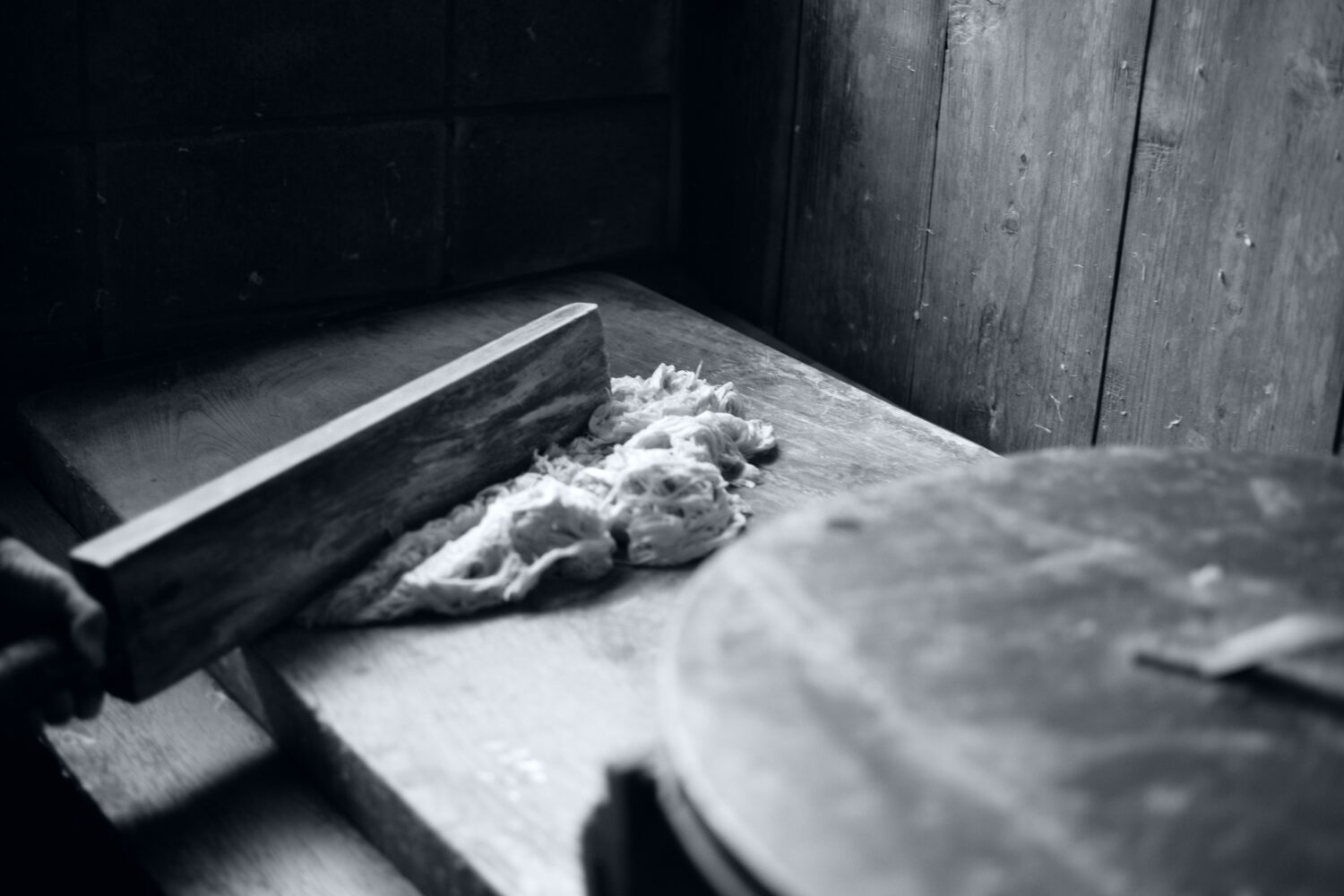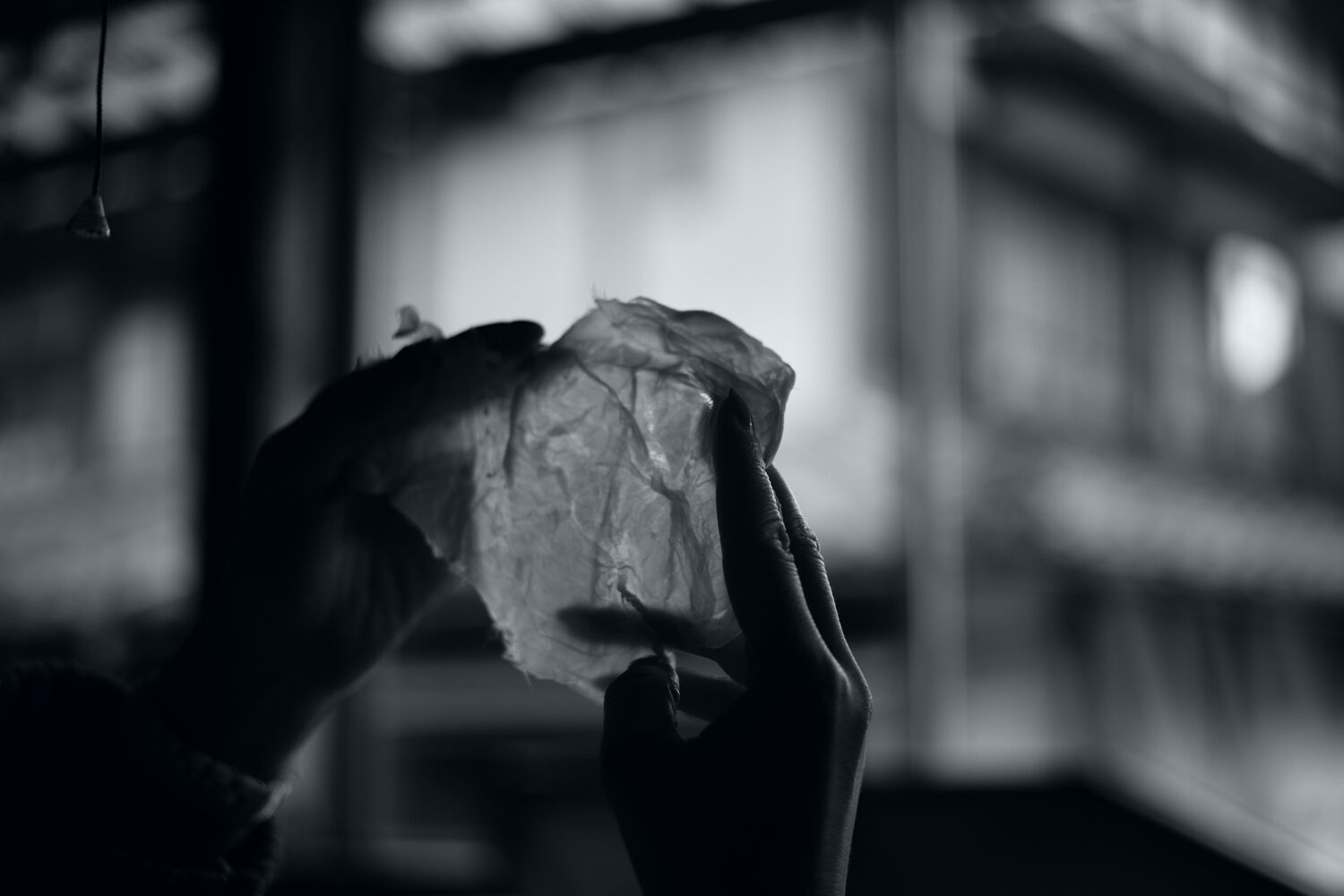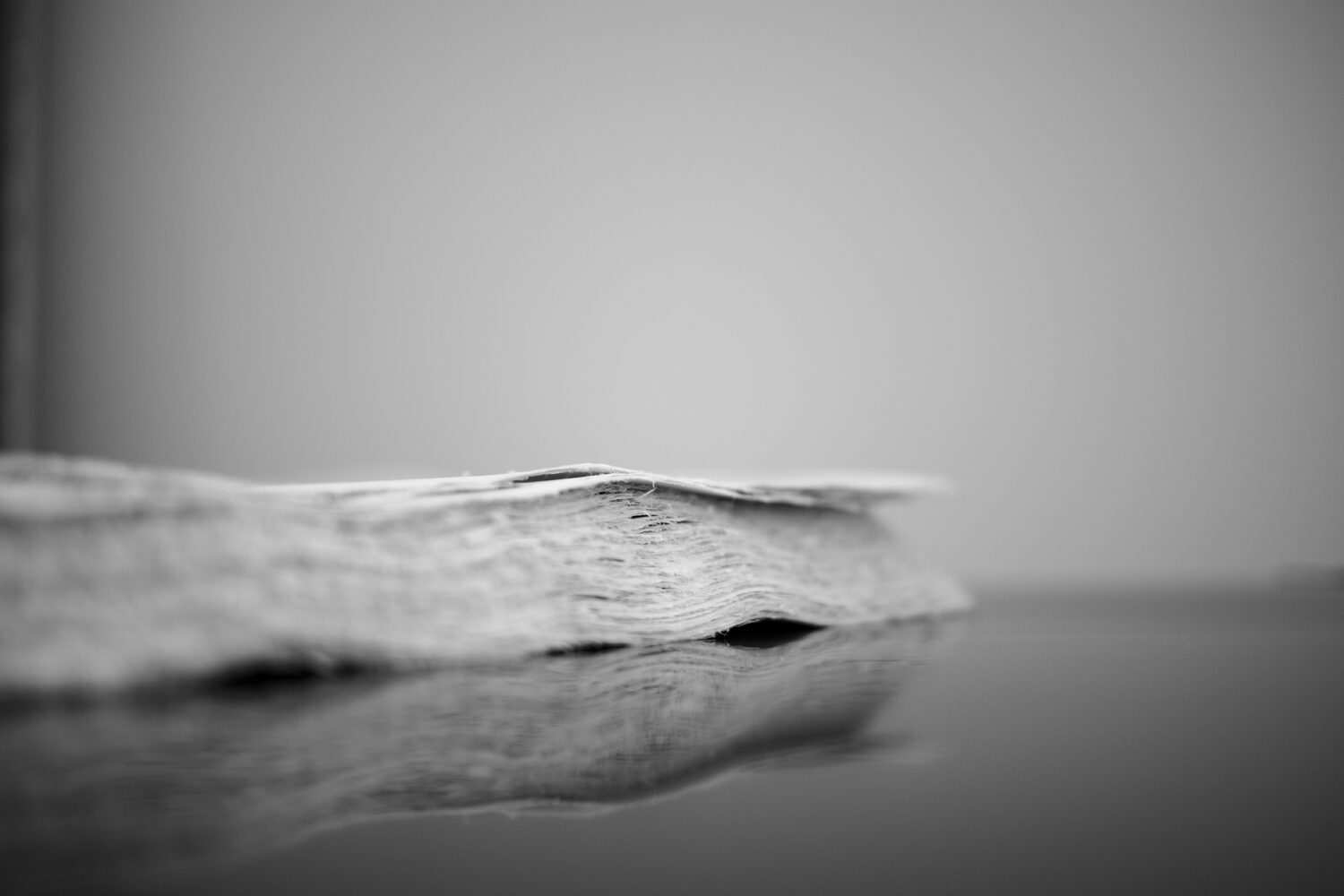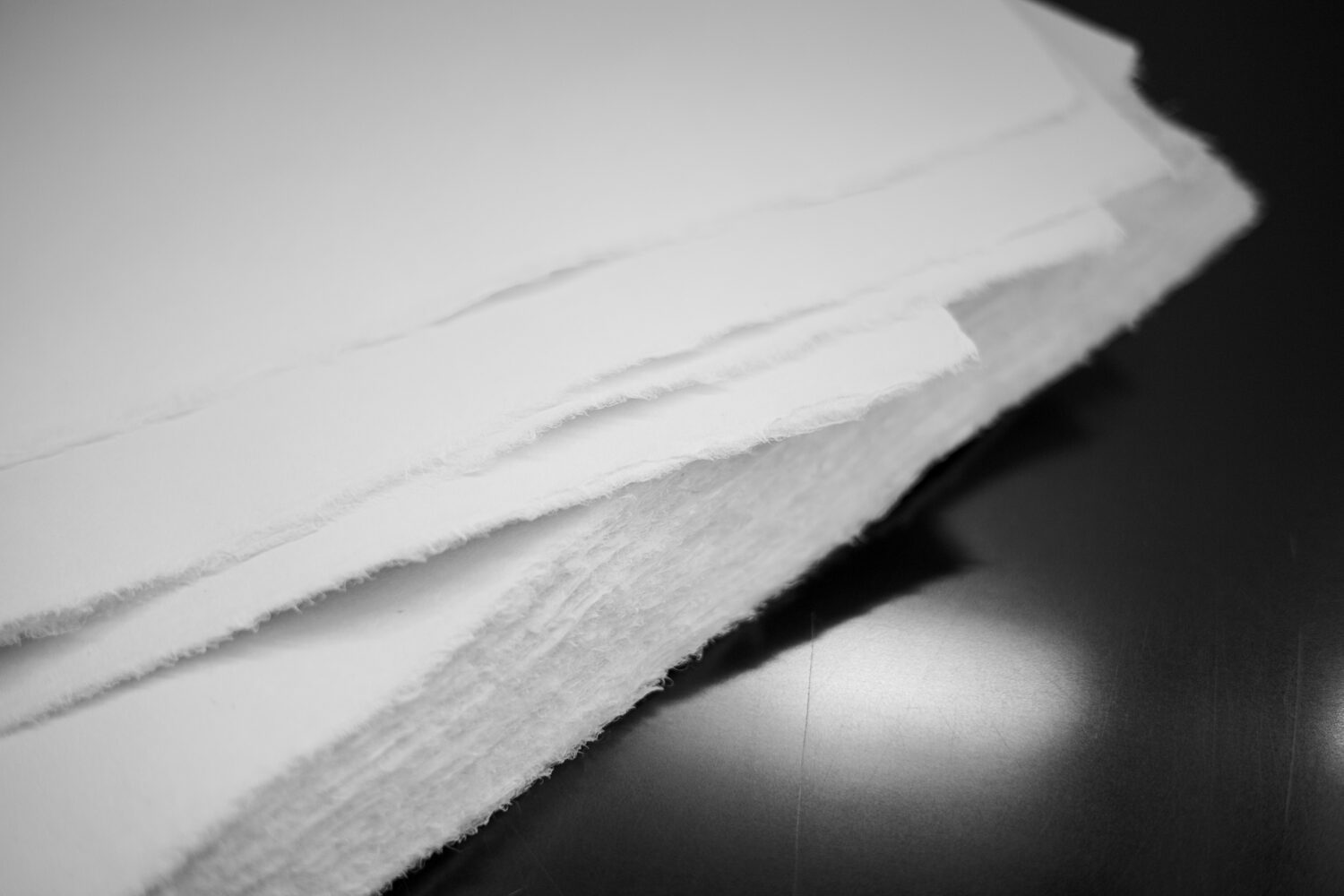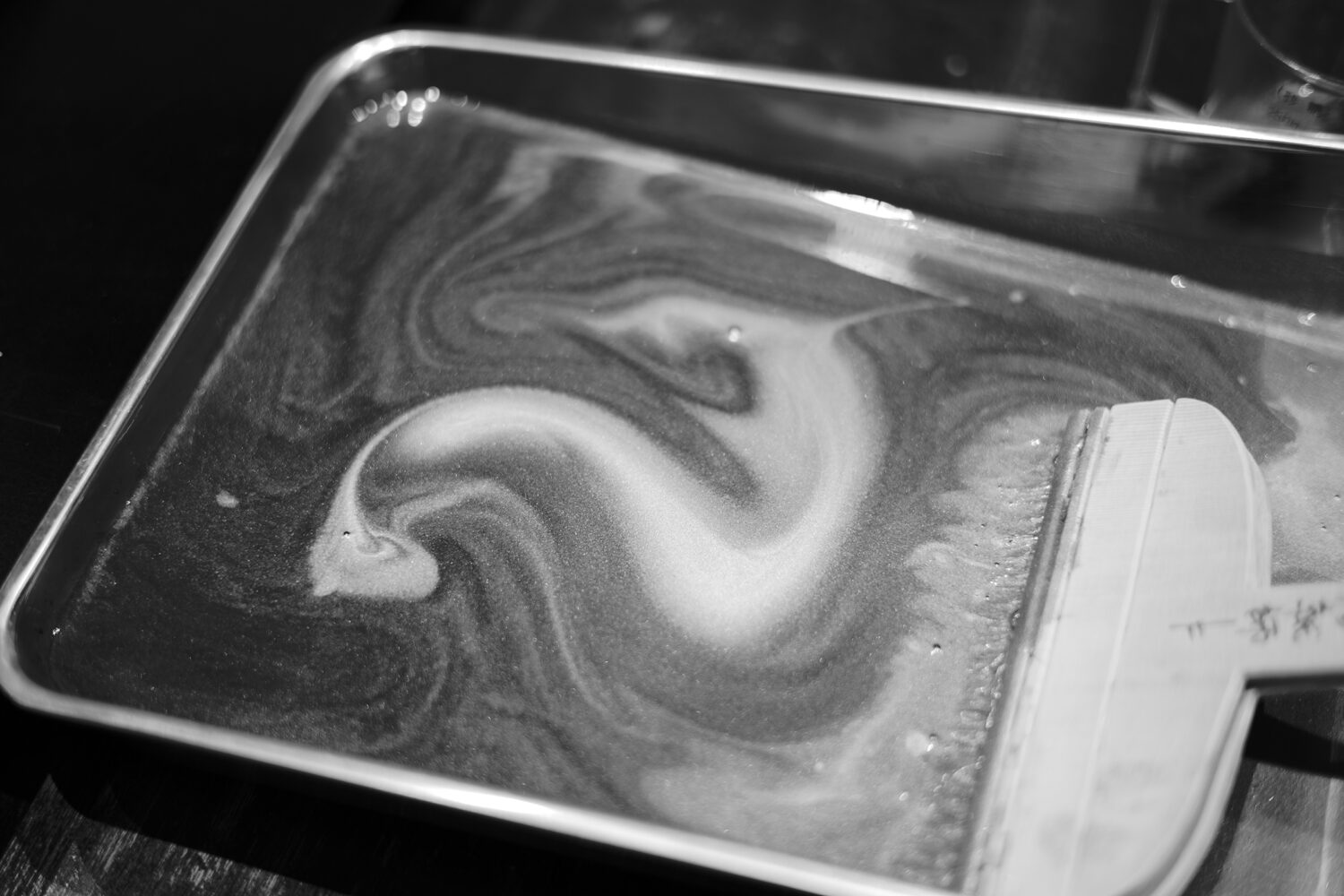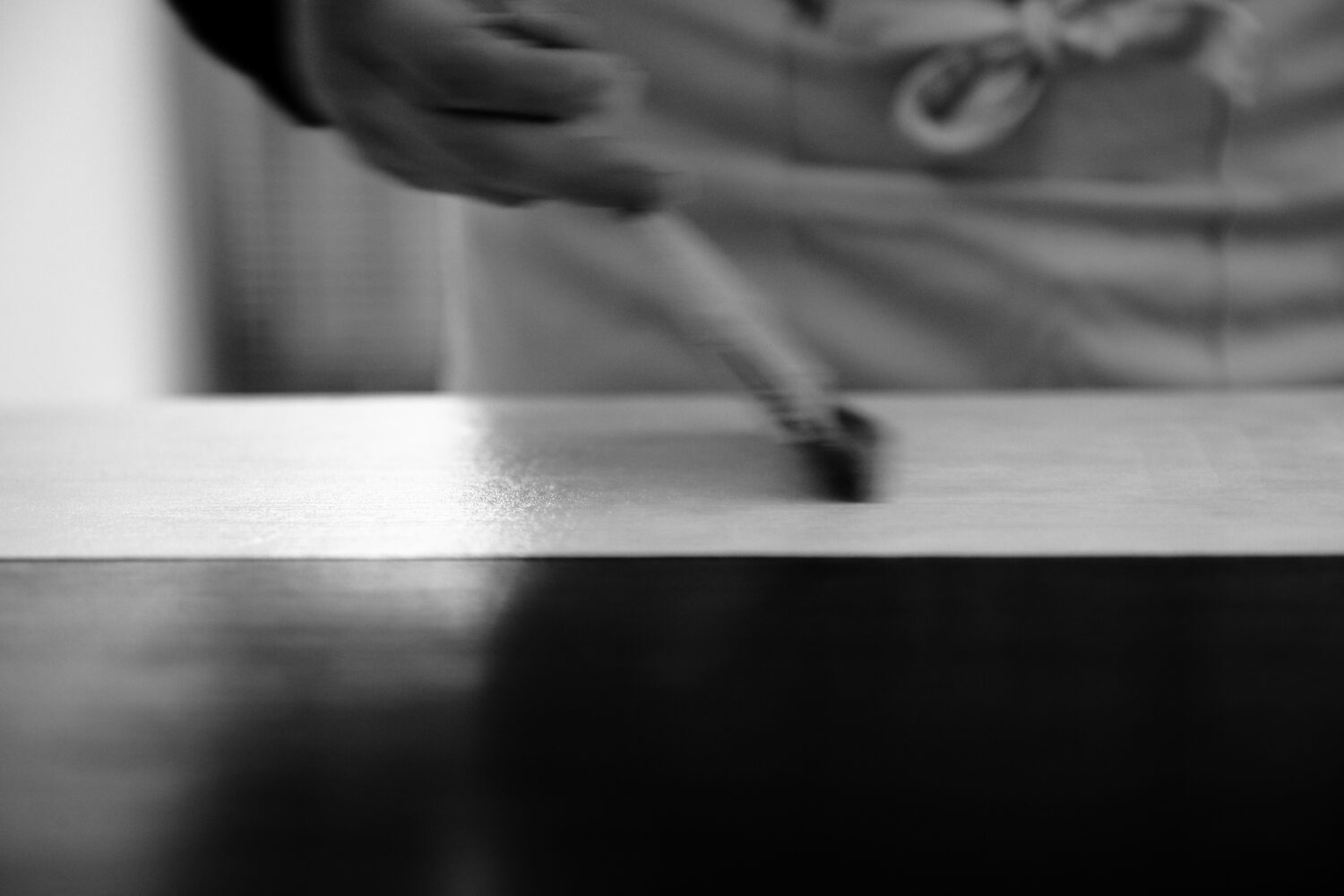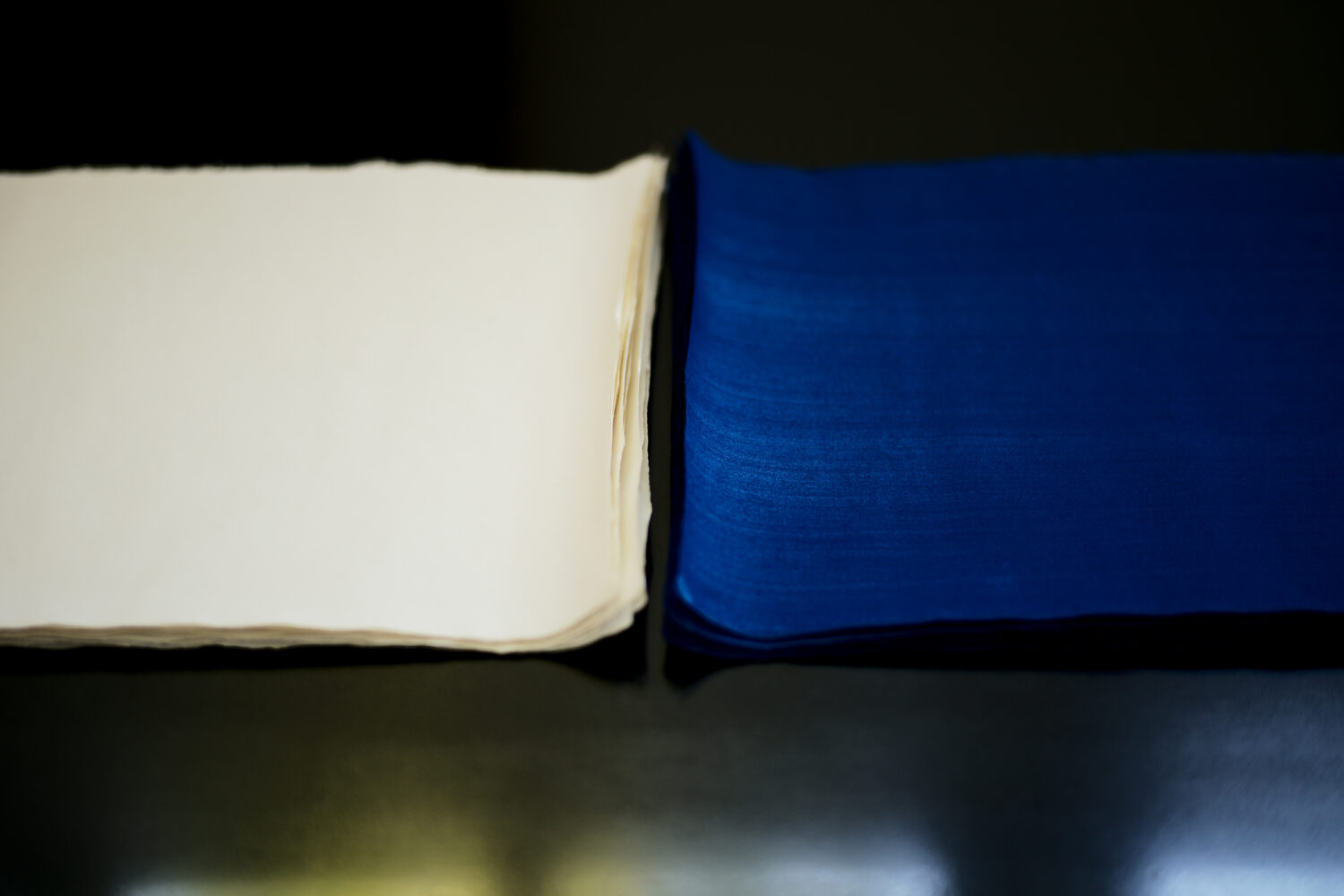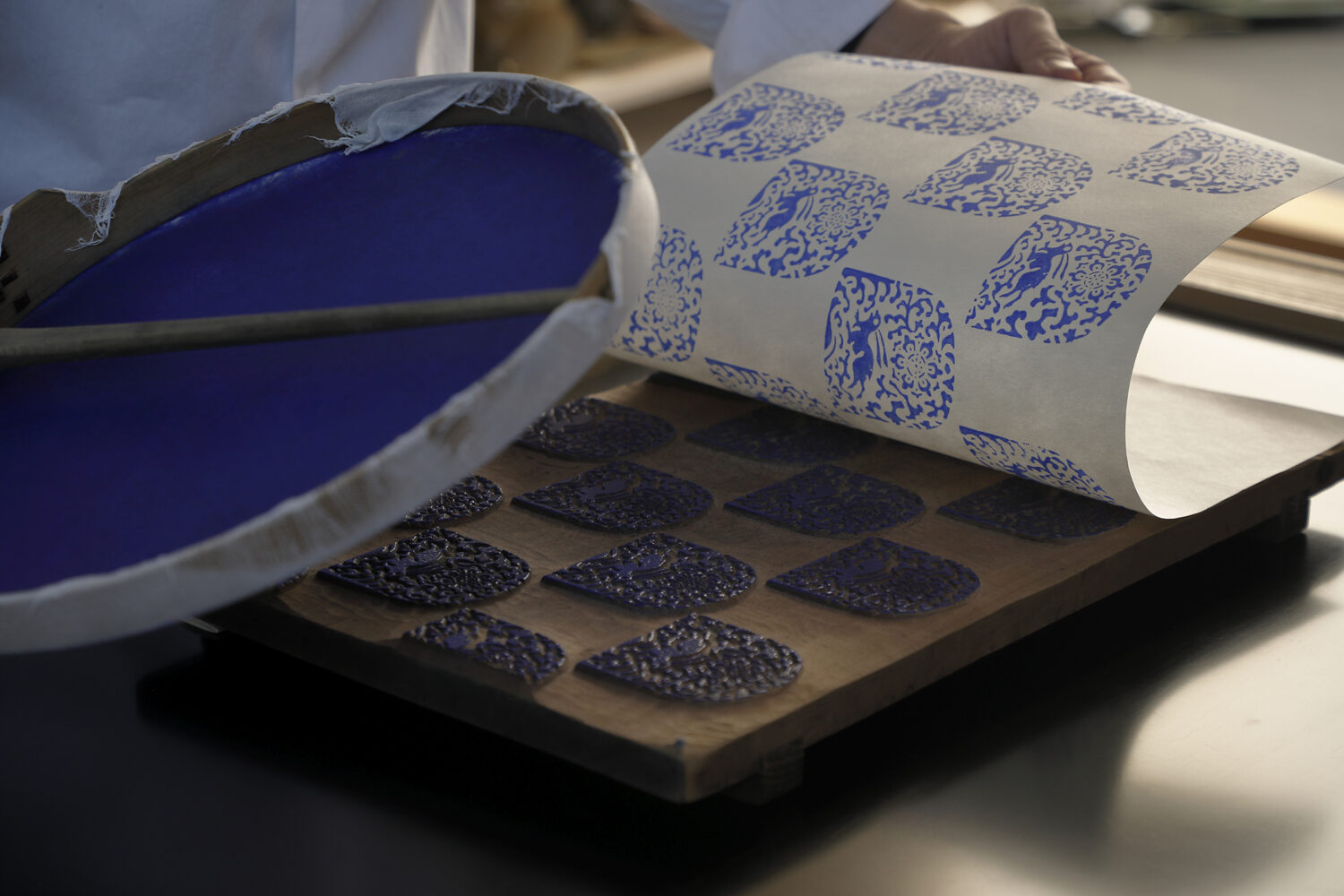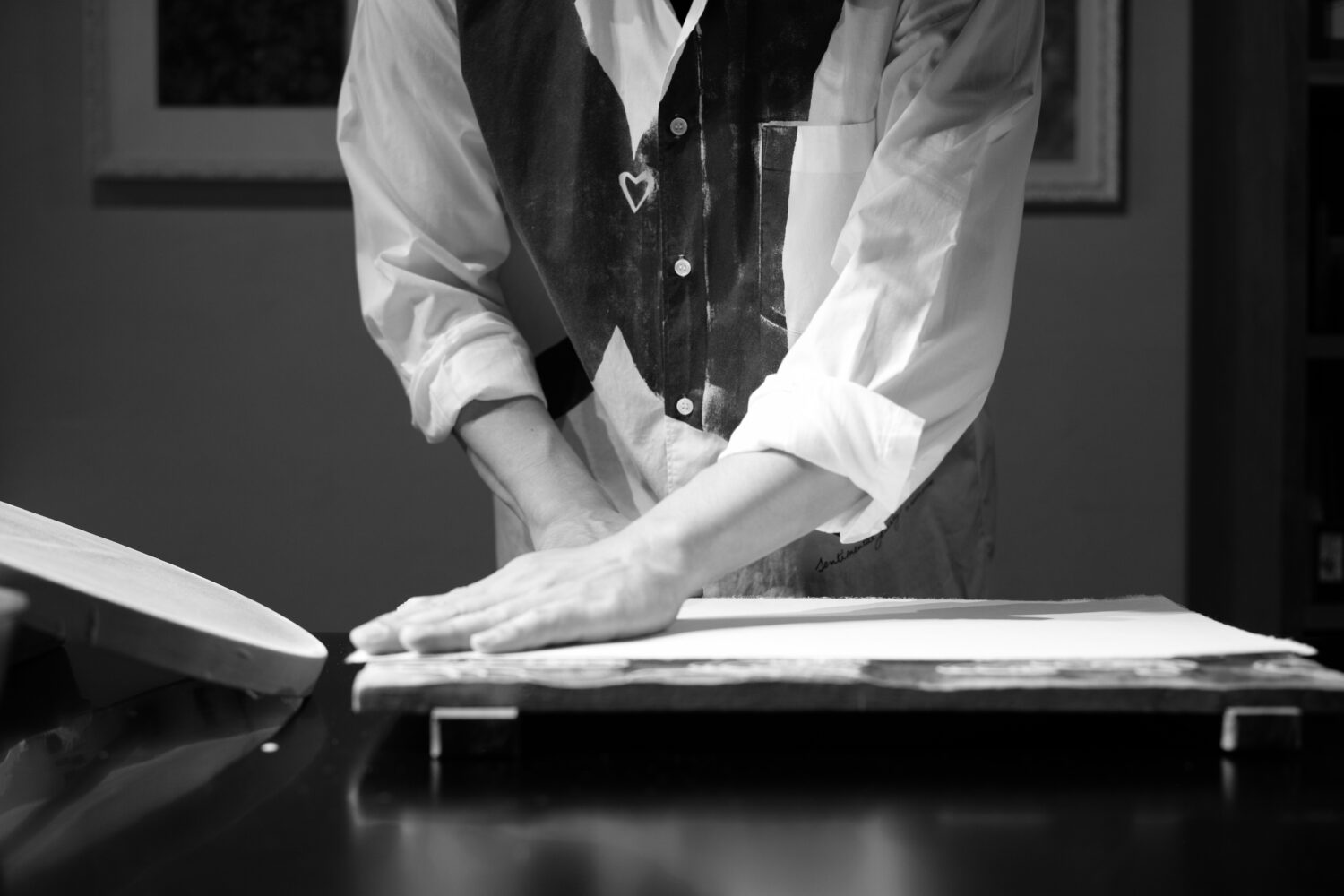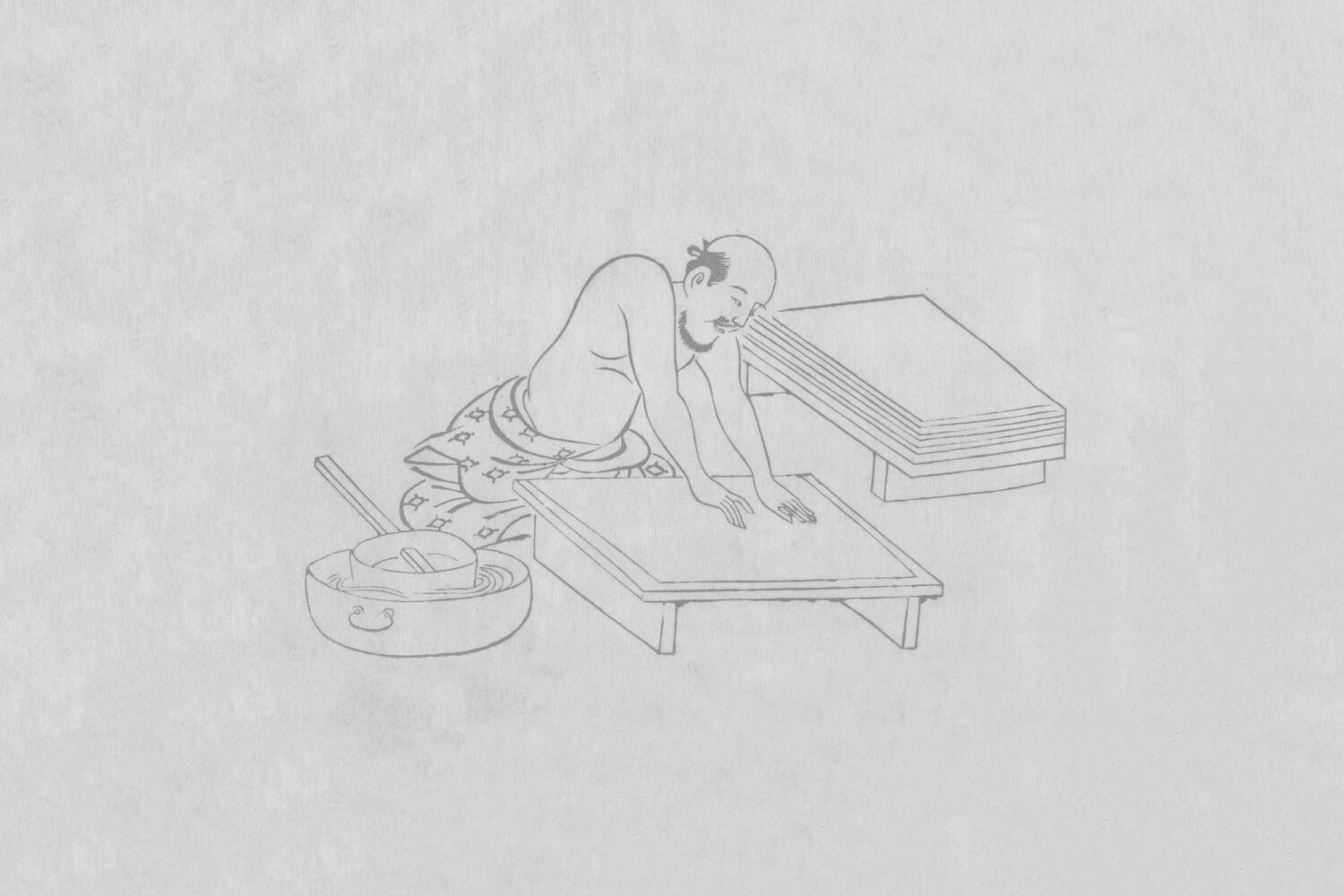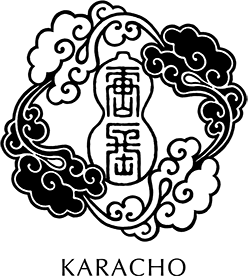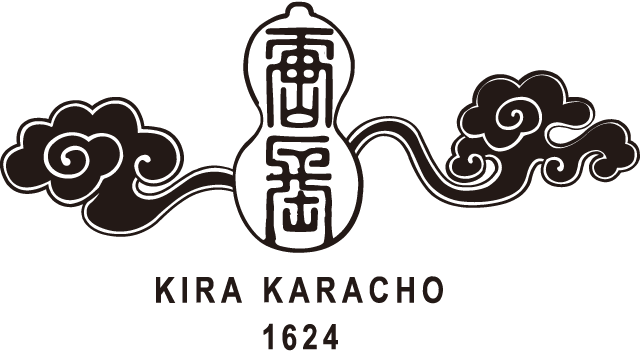Karakami Paper Production
The production of karakami paper always begins with the mixing of paints and the painstaking application of the base color to each sheet of washi paper by hand in a process called gubiki. Karakami paints are made of a type of granite called kira (“mica” in English) and a powder called gofun, which is made of crushed seashells. There are several different types of washi paper, all made from kozo (paper mulberry) and ganpi fibers, such as Echizen, Kyoto Kurotani, Mino, and Shikoku. An appropriate type is selected, according to how the karakami will be used.
Coloring the washi takes several days. If the paper requires additional preparation to prevent the bleeding through of colors, it is first treated in a process called dosabiki. After that, pigments are applied with a brush (gubiki), but the colored washi cannot be used as it is because of the warping and curling that may occur during the drying process. Therefore, after coloring, one must take the time to remove the warping and curling of the washi. Once the warps and curls have been removed, the coloring process is repeated to deepen the texture of the color until one reaches the desired result. For example, it takes about 200 skilled strokes of the brush to color a sheet of paper the size of a single fusuma sliding door.
To color 10 such sheets in the same way would require 2,000 brush strokes, all of which must be done in as consistent and uniform a way as possible to avoid inconsistencies in the final product. After drying, the warps are removed. If the paper is to be colored twice, the stroke count reaches 4,000, and if it is colored a third time, then the stroke count goes up to 6,000. Through this process, the base color of Karacho karakami is carefully primed and prepared.
A tool uniquely used in karakami production called a furui (sieve) is used to copy the designs from the woodblocks onto the colored washi. Instead of applying paint directly to the woodblock, the furui is used to softly spread the paint onto the surface of the wood. When copying the pattern from the woodblock to the paper, the artist presses down on the paper with the palms of the hands, relying a great deal on his or her sense of touch, rather than using tools such as the baren, which is used in other forms of Japanese woodcut printing. In this way, the hand printing of karakami is literally a handcraft.
These techniques are unique to karakami, constituting the decisive difference from other methods of woodcut printing. The technique has remained unchanged for centuries, and the karakami artist depicted in the Wakoku Shoshoku Ezukushi (Collection of Pictures of Various Occupations in Japan—painting by Hishikawa Moronobu), painted in 1685, is also shown with a woodblock and furui.

